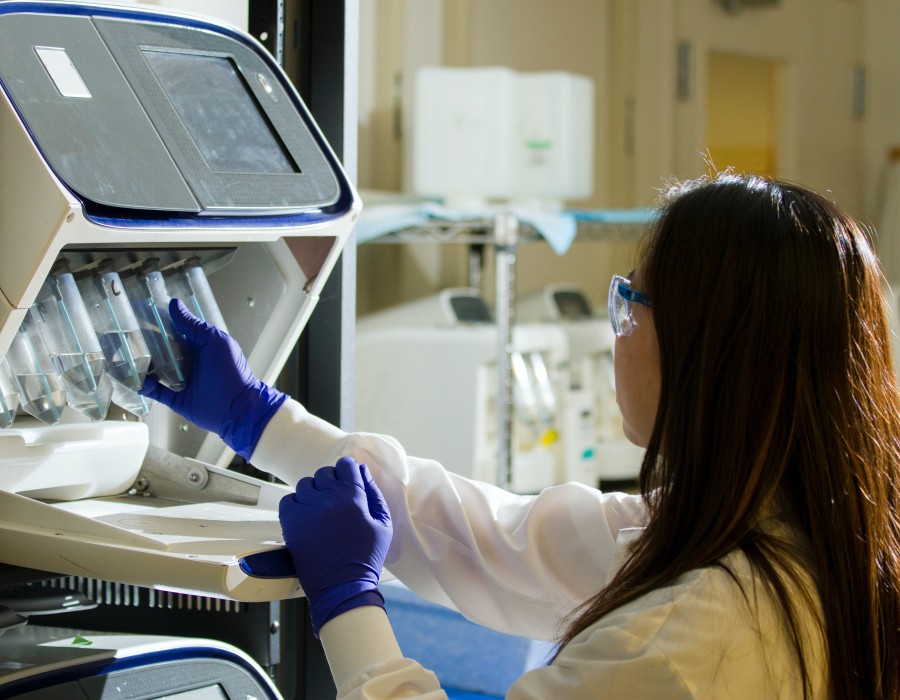On March 14, 1942, Anne Miller became the first person saved by antibiotics when she developed a fever. Since then, humans have fought off the deadly bacteria in the short term, saving millions of lives, but the infection has also become harder to treat in the long run. We call it the law of unintended consequences. Some microbes evolve fast enough to overwhelm our best efforts to eradicate them.
The U.S. Centers for Disease Control and Prevention has identified some Enterobacteriaceae as particularly urgent threats. Although these bacteria are harmless in the human gut, when these bacteria enter the respiratory or urinary tracts, they can cause serious infections. Many people evade all known drugs, including a class of highly potent antibiotics known as carbapenems. So-called multidrug resistance has grown rapidly over the past two decades. According to a 2019 United Nations report, approximately 1 million people currently die from incurable infections each year, a figure that is expected to surpass cancer deaths and reach 10 million a year by 2050.
According to the World Health Organization (WHO), market forces have exacerbated the problem. Big Pharma has strong financial incentives to seek out treatments for chronic diseases that patients will need for years to come. Because of the short treatment intervals for infections, the profits of new antibiotics are relatively limited. Additionally, in an effort to slow the resistance dynamics, doctors often only use newer drugs after older ones have failed, leading to depressed demand for smaller companies. Many new antibiotics offer no clear advantage over cheaper, more common drugs. Over the past decade, several well-known biotech startups with FDA-approved antibiotic treatments have collapsed in this economy.
Since 1962, only two new classes of antibiotics have entered the market, and neither of them can treat the most resistant infections.
All of this has slowed down the pace of antibiotic development. The World Health Organization called the outlook "bleak". A recent report stated that the "lack of diverse compounds suitable for bacterial therapy" and "lack of new, suitable chemicals to serve as drug discovery leads are major bottlenecks in antibiotic discovery."
A mechanism that bacteria use to protect themselves could lead to the development of new antibiotics. The compound, called cloacaenodin (chloa-say-nodin), is a short, slippery chain of amino acids called lasso peptides, encoded by gut bacteria as a defense mechanism. Peptides play a variety of roles in the human body and have been widely used in medical treatments. The peptide works by attacking rival bacteria and is a very potent killer. If harnessed by science, it could be repurposed to fight infections that current medicines cannot treat.
When the peptide is released, it hooks up to a target cell's RNA-producing enzyme, shutting down essential cell functions. It targets a particularly dreaded group of pathogens, the Enterobacter genus, which the Centers for Disease Control and Prevention (CDC) have identified as a major driver of the accelerating global crisis: bacterial infections increasingly refractory to conventional antibiotics.
A. James Link's research group has identified several peptides of the same type—structures with a loop attached to a tail that passes down through the loop, like a rodeo lasso—shown desired antimicrobial properties.
"The peptide not only killed off-the-shelf historic Enterobacter strains, it also killed drug-resistant Enterobacter strains that actually came from hospital patients," said Link. They published a paper on this in ACS Infectious Diseases. The discovery also shows that his peptide mining and synthetic biology techniques can reveal more antibacterial compounds with strong drug development potential, an important step in curbing the growing superbug crisis.
"If it's produced by one species of Enterobacter, it's likely to kill other species of Enterobacter," Link said. This provides researchers with a way to prioritize peptide mining, as peptides encoded in pathogen-associated strains are more likely to have interesting biological activities.
"It's one thing to kill bacteria," said Drew Carson, a fourth-year doctoral student in chemical and biological engineering and lead author of the paper. "It's another thing to kill bacteria that are actually making people sick."
While cloacaenodin has shown powerful antibacterial properties, it is only the first of many steps for a new therapy. Determining the safety of a compound is difficult and expensive, taking at least 10 years from initial testing through the regulatory process. Historically, some peptides have been shown to be toxic to the kidneys, limiting their use in medicine. But according to Link, peptides that have bacteria-selective activity without harming animal cells may not have this toxicity.
But the new compound has shown promising antimicrobial properties, and researchers are only beginning to wonder what happens next. They plan to test it first in animal infection models to confirm that it clears the infection and is safe for animal cells. More broadly, however, the discovery of this compound shows that Link and his team have developed a peptide mining toolkit that will uncover many other interesting compounds in the future, and it is not yet known where this will lead.
"The way we find these peptides is by looking at the genome sequence of an organism," Link said. "If you give us any DNA sequence, we can find out very quickly and accurately whether there is a lasso peptide encoded in it. We also know that the lasso certain sequences in the sentropides, which means they have a good chance of being antibacterial. That's how we targeted that."
There are tens of thousands of Enterobacter genome sequences that have been entered into scientific databases, Link said, and the lasso peptide his team found exists in only a handful. One of the microbes came from a hospital patient with a lung infection. And, because of the "associative guilt" approach he used in his search for the peptide, they knew it could kill off many related organisms that don't have the exact same genes.
"We tested a dozen strains and saw activity," Link said, referring to the antimicrobial activity. "But it may be active against hundreds or even thousands of these sequenced Enterobacter isolates."





Comments